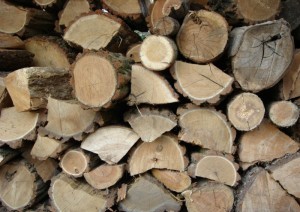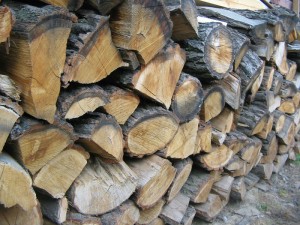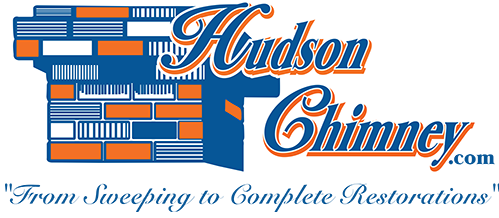by Mark Hudson | Dec 15, 2014 | Firewood
If you have a wood burning fireplace or stove, you may wonder if there is anything of significance that you can do to maintain the efficiency, safety, and health of your appliance. The answer is yes! By choosing the best firewood to burn in your appliance, you can protect your chimney or stovepipe from rapid creosote build-up and your home from dangerous chimney fires. Not only this, but the right firewood will help you to create fires that are warmer and more enjoyable.

Regardless of the type of woodburning appliance you own, you should only burn seasoned firewood. According to the Chimney Safety Institute of America, the distinction between seasoned and unseasoned firewood is its moisture content. Seasoned firewood has a low moisture content, usually between 20 and 25 %. Unseasoned firewood, on the other hand, can have a moisture content as high as 45 %. Burning firewood with a higher moisture content can cause you and your chimney a number of problems, from the unpleasant to the dangerous. You will have trouble enjoying your chimney if you burn unseasoned firewood because of the unpleasant smell and smoke it produces. However, your biggest concern is that the water in unseasoned firewood will allow for creosote to rapidly build up in your chimney. Creosote is highly flammable, creating a hazard for chimney fires, and can build up into glazed creosote, which can only be removed from your chimney by a professional with chemicals.
If you chop your own firewood, it is easy to know if it is seasoned or unseasoned. Simply be sure to cut your firewood to length six months before you plan to use it in order to give water in the wood time to environment. Cutting your wood to length opens up the microscopic tubes in the wood that hold water, which allows the water to escape.
If you buy your firewood, it is a little more difficult to tell if your firewood has been properly seasoned. The best way to be sure your firewood has been properly seasoned is to buy it six months before you intend to use it and store it properly. However, seasoned and unseasoned firewood have characteristics that differentiate them from each other that you can utilize to see if the firewood you are buying has been seasoned. Seasoned firewood has darker ends and more cracks than unseasoned firewood and also tends to be lighter. Seasoned firewood also makes a clunking rather than a thudding noise when it is hit.
Whether or not you buy or chop your firewood, you must be sure that it is properly stored. A wood shed is the best place to store firewood. However, you can also store wood in a sunny location as long as you remember to cover the wood when it rains or snows. No matter where you store it, make sure that air is allowed to circulate to promote evaporation and try to store the wood off of the ground.
Give Hudson Chimney a call if you are unsure if you are burning the correct kind of firewood or if you have concerns regarding creosote build-up. The professionals at Hudson Chimney know how to keep you and your home warm and safe!
by Mark Hudson | Nov 30, 2014 | Ash Disposal
If you have a wood burning chimney, you may be unsure of how to properly and safely dispose of the remaining ash in your firebox. You may also be unsure as to how often you should have your fireplace and chimney professionally cleaned. The experts at Hudson Chimney have the expertise and skill necessary to answer all of your questions regarding your fireplace and chimney as well as to clean and help you maintain and repair your chimney.

When you are emptying your firebox of ash, it is important that you protect your hands from leftover embers by wearing leather gloves. Use a metal scoop to transfer the ash from your firebox to a metal bucket and add a little water. Place the bucket in a location away from any combustible materials (outside the home is best), and let it sit. It is also a good idea to use the metal scoop to mix the ash and break up any chunks before you let it sit. According to The National Garden Association, the ash can be used as a fertilizer for your gardens. However, this is not the case when you burn cardboard, treated wood, or painted wood, which create toxic ash and should not be burned in the first place, as they also release toxic fumes when they are burned.
When you do remove ash from your firebox, according to the Chimney Safety Institute of America, it is beneficial to leave some of the ash. The CSIA recommends that you leave a layer of ash that is one inch thick on the bottom of your firebox in order to make building and maintaining a fire easier, create hotter fires, and protect the floor of you firebox. However, it is still important to clean your firebox because leaving more than a one inch layer can lead to the premature burn out of your grate as well as decrease the amount of fuel you can add to your fire. If you do leave a layer of ash, make sure to remove this layer at the end of chimney season, when you will no longer be using your chimney.
It is also important to have your chimney cleaned by a professional at least once a year. Only a professional can thoroughly clean your chimney as well as remove all of the creosote that has built up. Creosote, which is very flammable, is created as a byproduct of wood burning fires when hot smoke and gases hit the cool sides of your chimney. It is important to have creosote professionally removed so it does not build up into glazed creosote, which can only be removed from your chimney with chemicals.
Call Hudson Chimney if you have any questions about the proper disposal of ash or if you have not had your chimney cleaned yet this year. The experts there have the skill to provide you with a clean, safe, and efficient chimney for the winter.
by Mark Hudson | Nov 15, 2014 | Firewood
If you have a wood burning appliance, then you have more control than you probably think over the way your appliance runs. The type of wood you burn influences how efficiently your chimney runs in addition to the overall health of your chimney. It is important, then, that you choose to burn seasoned firewood. According to the National Chimney Safety Institute of America, burning seasoned firewood will allow your appliance to burn cleaner and more efficiently than burning unseasoned firewood. In fact, whether or not your firewood is seasoned is far more important than the species of wood you burn.

You may be wondering what the difference is between seasoned and unseasoned firewood as well as why this difference is important. All wood has a certain amount of water in it. Seasoned firewood has moisture content of 20 to 25 percent while unseasoned wood can have a moisture content of up to 45 percent. Burning unseasoned wood is inefficient because energy is lost to drying the wood before burning it, leading to a lower heat output. Not only this, but burning unseasoned wood also leads to more creosote build up in your chimney or stovepipe.
In order to make sure that your firewood is seasoned if you chop it yourself, cut it to length at least six months before using it. Splitting and cutting the firewood to its proper length gives the wood more exposure to the sun and wind, allowing evaporation to occur. If you buy your firewood, it is good to buy it the spring before you use it to ensure that it is well seasoned. However, if you buy your firewood close to the time you burn it there are several ways to tell if the firewood you are buying is seasoned. Check to make sure that the ends of the firewood are cracked and darkened and that the wood is light and makes a “clunking” noise when two pieces are hit together. Unseasoned firewood will be heavier.
The way you store your wood is also important to the way it will burn. If your firewood is exposed to snow and rain, it will absorb too much water to burn properly and possibly rot. Store your wood off of the ground and cover it in the case of bad weather. Leave it uncovered on sunny days to allow evaporation to occur.
When burning wood, make sure that you do not burn wood that has been painted or treated, which can cause toxic fumes to be released into your home. Also, if you end up burning unseasoned wood, it is important that you have your chimney or stovepipe frequently cleaned and inspected to avoid hazardous creosote build up.
If you are unsure about the type of wood you should be burning in your fireplace, ask an expert at Hudson Chimney during your annual chimney cleaning and inspection. The professionals at Hudson Chimney have the knowledge and training to help you determine the best choices for your chimney in order that it run efficiently and safely.



